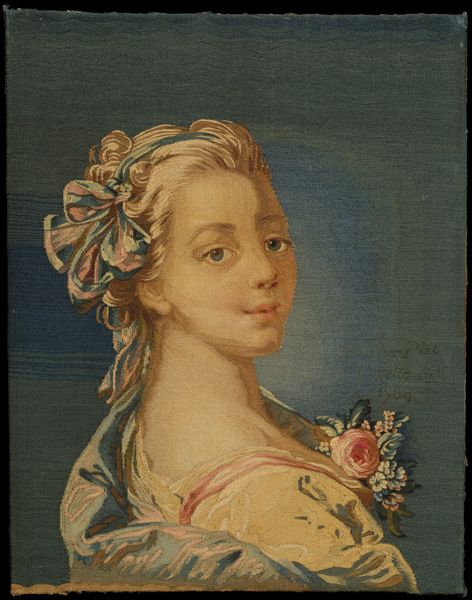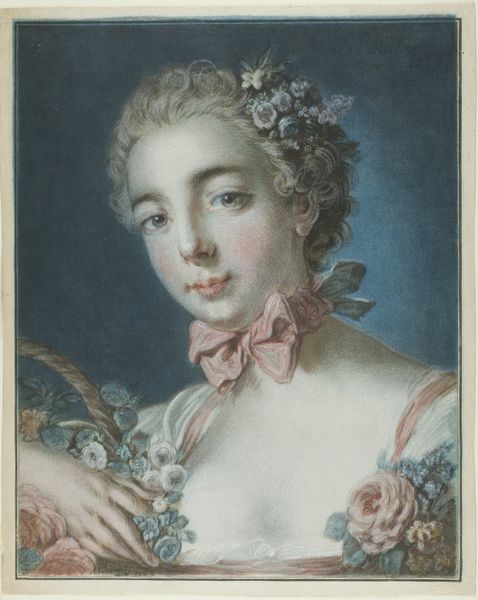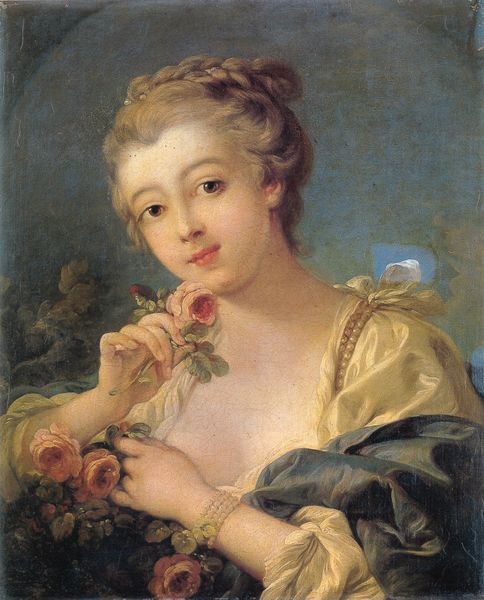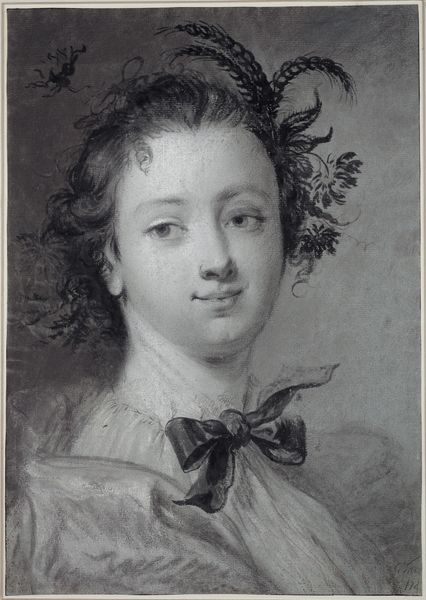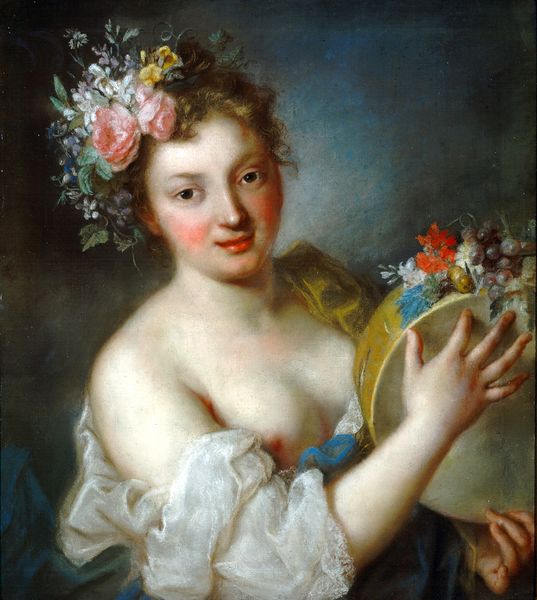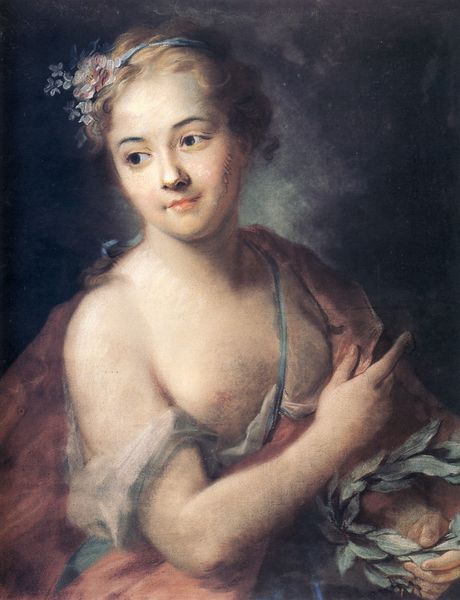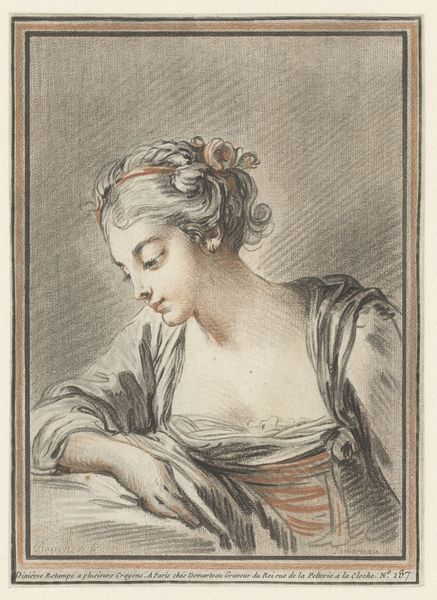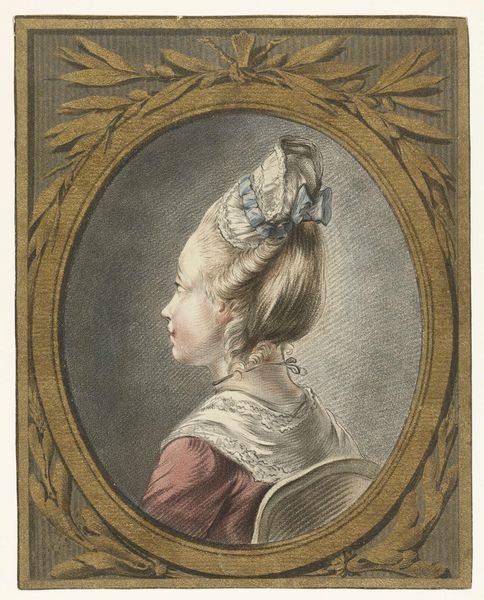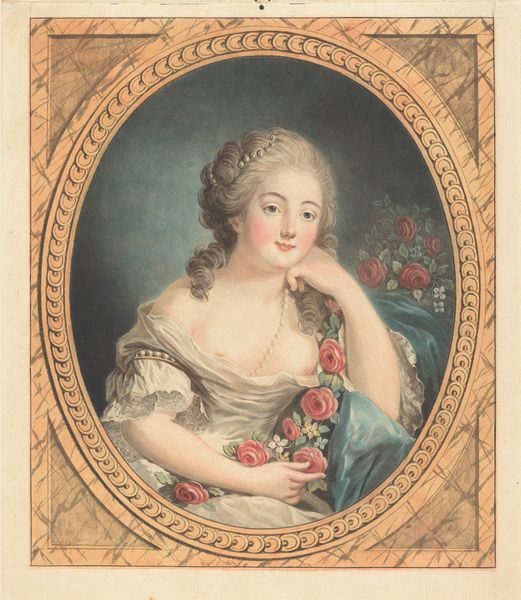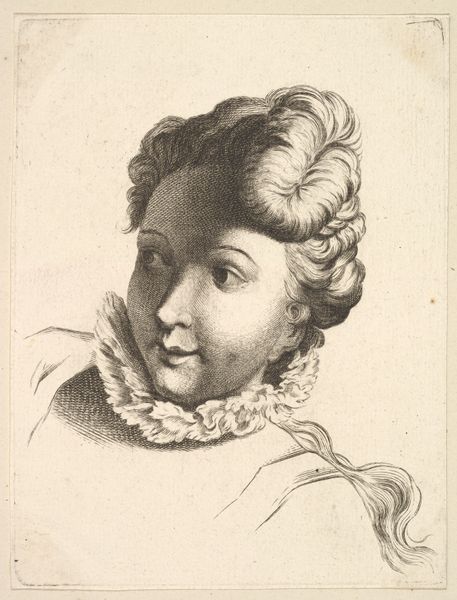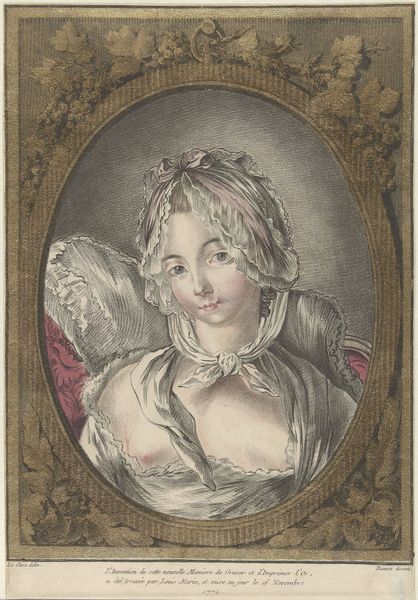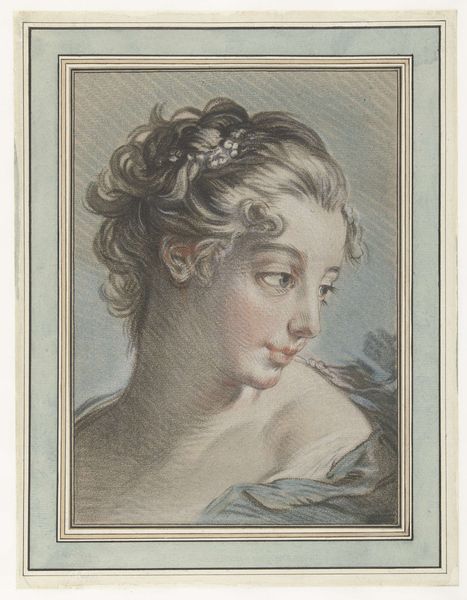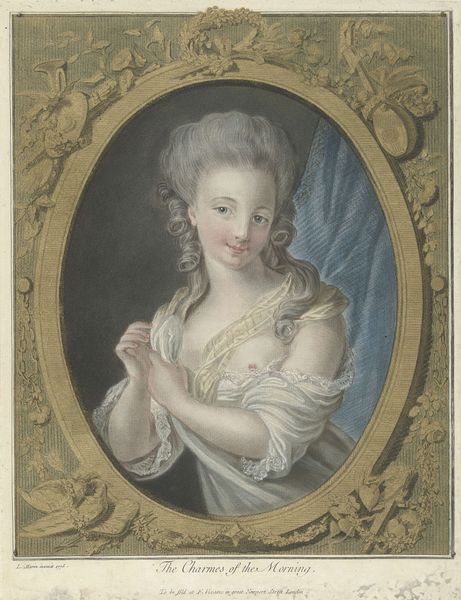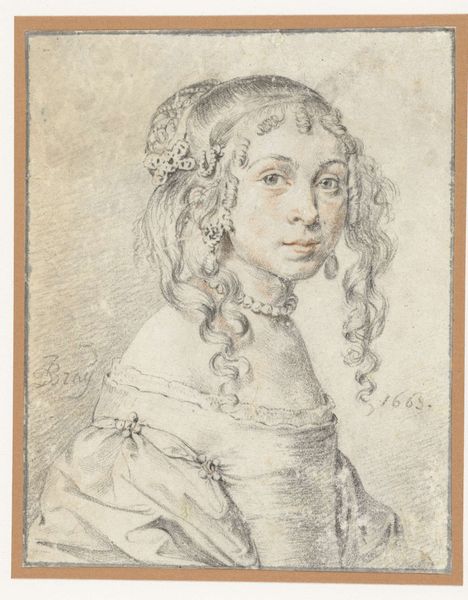
Dimensions: 414 × 350 mm (image); 423 × 360 mm (sheet)
Copyright: Public Domain
Curator: Editor: Here we have Louis Marin Bonnet's "Bust of a Woman" from around 1771. It's an engraving and etching on paper, after a painting by Boucher. I'm struck by the delicate use of color, and I'm curious, what do you see in this print? Curator: Immediately, I’m drawn to the means of production, specifically how Bonnet replicated the colors and textures of a painting using etching and engraving techniques. How does the social standing of printmaking—its mass reproducibility—challenge the singular aura typically associated with paintings, and how does Bonnet manipulate that tension? Editor: So, it’s not just about the image itself, but also about the *process* of making the image? The print allowed it to be seen by a wider audience? Curator: Precisely! Consider the paper itself, likely made from rags – a material with its own history of labor and value. Then think of the accessibility this brings; prints democratized art to an extent. It allowed the market, the *consumption* of art, to swell, for new consumers to experience the art of the elite, no? And at what cost? Is this ‘high’ or ‘low’ art now? Editor: I guess it makes you think about who had access to the image then, and how that access might change our interpretation now. It makes the original painting and Bonnet’s interpretation inseparable, like they’re in dialogue about access and audience. Curator: A conversation mediated by materials! Reflect, too, on the skilled labour involved in producing the engraving. It wasn't merely a mechanical reproduction; it required artistic choices, a translation of color and form. We can only wonder about the economic pressures on Bonnet in producing these works, and the influence of the art market on such works? Editor: That's something I definitely didn’t consider before. I was too focused on the aesthetic quality of the image, and not enough on its life as an object, made and consumed. Curator: Indeed! Art lives and breathes within these contexts, shaping and shaped by labour, class, and consumption. The portrait itself seems almost secondary now. Editor: This makes me want to research the printing process more! There is much to unpack in terms of materials.
Comments
No comments
Be the first to comment and join the conversation on the ultimate creative platform.
